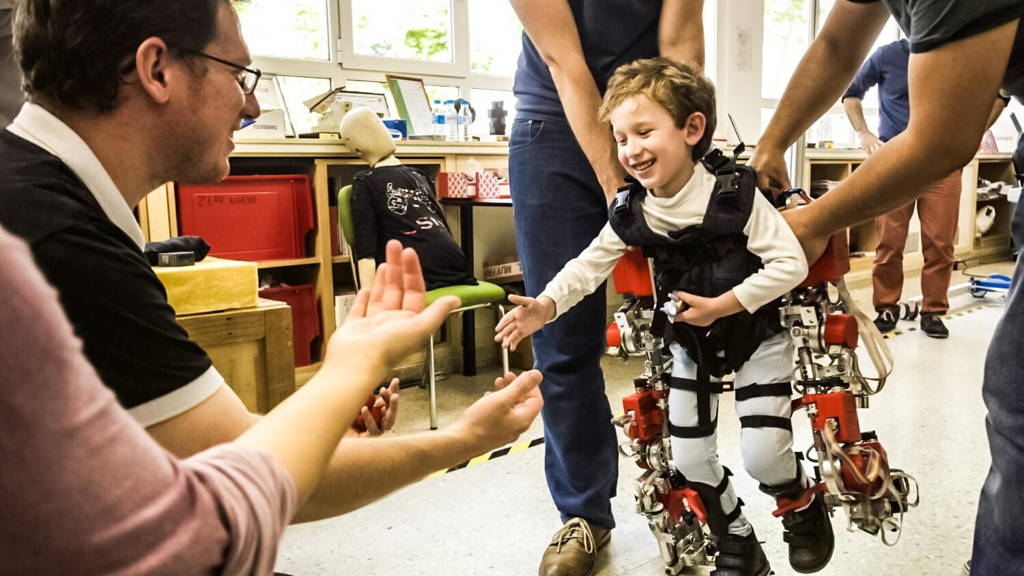The device is made out of aluminum and titanium and weighs 26 pounds. According to the CISC it will allow children to walk with greater ease, or in some cases will help them walk for the first time. The exoskeleton will also be used for training purposes and can be used to ward off muscular atrophy from lack of mobility.
CSIC researcher Elena Garcia says that the main difficulty in developing this type of pediatric exoskeletons is that the symptoms of neuromuscular diseases, such as spinal muscular atrophy, vary over time as both joints throughout the body. This makes an exoskeleton able to adapt to these changes autonomously necessary. The CISC model includes intelligent joints that modify the stiffness automatically and adapt to the symptoms of each child at all times.
The robotic frame of the exoskeleton attaches to a child's legs and torso and consists of five motors in each leg. The users have direct control over all five motors, which can detect the slightest intent of muscle movement and responds accordingly.
The exoskeleton is flexible and can adjust to rapidly growing bodies. It’s aimed at kids between three and fourteen years of age. It can target a variety of symptoms. The CISC's research arm has patented the technology, though it is not yet known when a commercial version will be launched.
###kid-exoskelleton###
CSIC researcher Elena Garcia says that the main difficulty in developing this type of pediatric exoskeletons is that the symptoms of neuromuscular diseases, such as spinal muscular atrophy, vary over time as both joints throughout the body. This makes an exoskeleton able to adapt to these changes autonomously necessary. The CISC model includes intelligent joints that modify the stiffness automatically and adapt to the symptoms of each child at all times.
The robotic frame of the exoskeleton attaches to a child's legs and torso and consists of five motors in each leg. The users have direct control over all five motors, which can detect the slightest intent of muscle movement and responds accordingly.
The exoskeleton is flexible and can adjust to rapidly growing bodies. It’s aimed at kids between three and fourteen years of age. It can target a variety of symptoms. The CISC's research arm has patented the technology, though it is not yet known when a commercial version will be launched.
###kid-exoskelleton###








